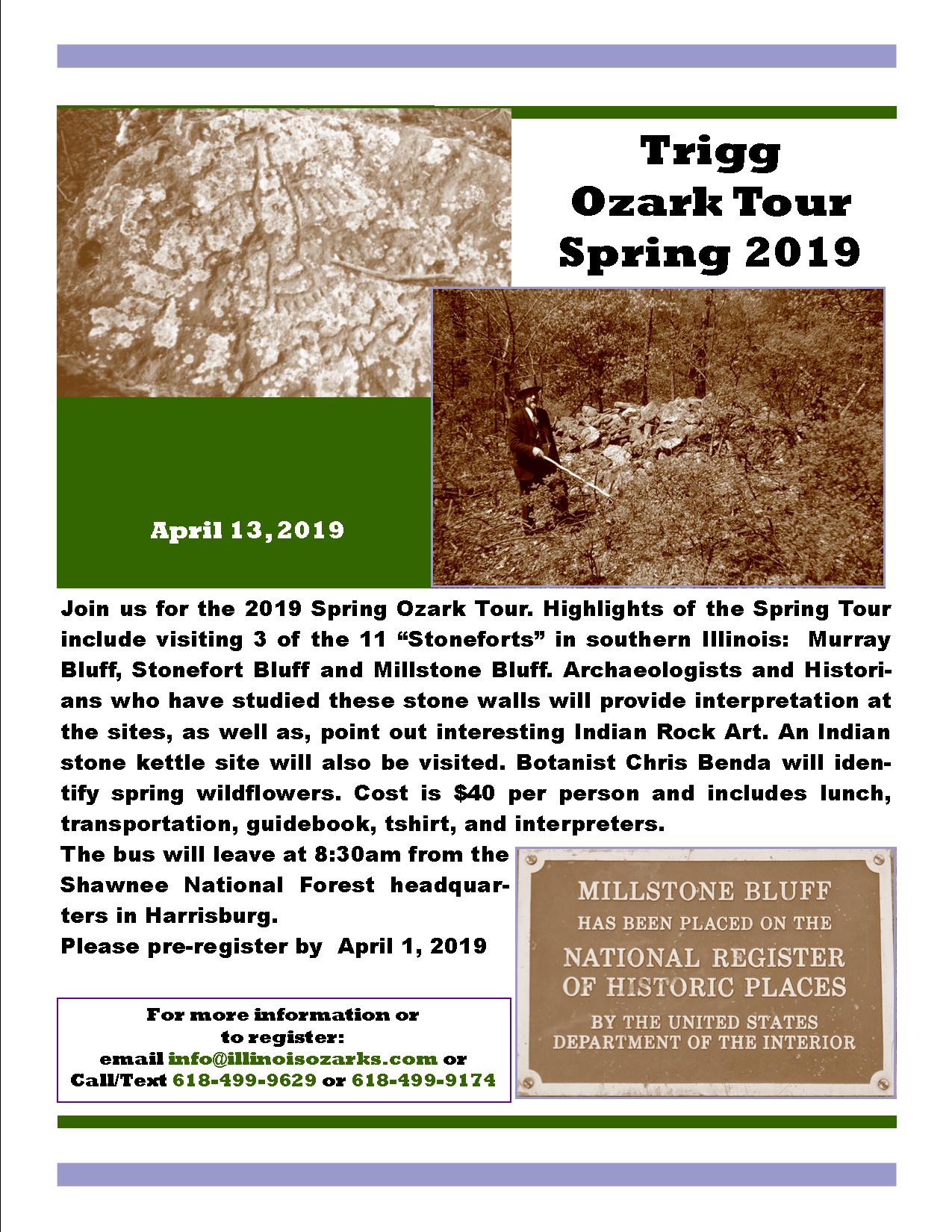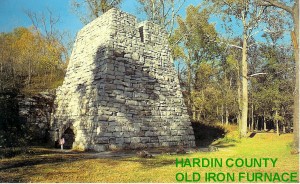We are pleased to announce the 2019 Spring Ozark Tour
Starting in 1931 and continuing annually until his death in 1949, Col. L.O. Trigg led expeditions into the forests of southern Illinois to demonstrate to the public at large the natural beauty of this corner of the state. In a large part due to these annual Ozark Tours, the National Forest Commission authorized the purchase of lands in southern Illinois resulting in the establishment of the Shawnee National Forest in 1939.

Why Illinois Ozarks?
When you think of the Ozarks most envision the hills and hollows of northern Arkansas and southern Missouri. In fact the same range crosses the Mississippi River and forms some of the most beautiful scenery in the nation right here in southeastern Illinois. Newspaperman L.O. Trigg, known as Col. Trigg, recognized the potential for this part of Illinois in the early 1930s when he began organizing an annual “Ozark Tour.” Each year a group of about 20 men would spend three days traveling with Col. Trigg visiting unique sites in the area. Many of the locations visited are now part of Illinois State Parks or the Shawnee National Forest. Col. Trigg recognized the importance of sharing the natural beauty of southeastern Illinois with others and was instrumental in building support for the Shawnee National Forest.Col. Trigg was part of a movement to promote the area as the Illinois Ozarks. Today we have embraced the spirit of Col. Trigg and others as we continue invite visitors to “Experience the Illinois Ozarks.”
Iron Furnace
Following the Revolutionary War Americans moved west across the new country into the frontier beyond the eastern mountains. Travel was treacherous and spare parts were hard to come by. A broken wagon wheel or rifle trigger meant certain death for a pioneer and his family. Advertisements such as the following were common wherever newspapers were printed on the frontier: If some “portable” blacksmith will move his shop into this vicinity, he can get a very large and paying custom. Blacksmiths were in much demand on the frontier. Transportation of the needed iron to the inland settlements was costly and difficult. It was therefore feasible and financially advantageous for local people to erect furnaces and ironworks wherever the necessary ore was located.
In 1839, Timothy Guard, a former senator in the Illinois General Assembly, and General Leonard White, a delegate to the Illinois Constitutional Convention in 1816, entered the iron working business by building a blast furnace east of Elizabethtown along the banks of Big Creek.The blast furnace resembled a cut-off pyramid, twenty-six feet square at the base, thirty-two feet high, and twenty-two feet square at the top. Nearby Big Creek was dammed and a millstream dug to the furnace to operate the bellows. Log homes and buildings were constructed and a whole town grew up around the furnace.By 1840 the construction was complete and the furnace ready to be “blown in.” Raw materials were gathered from the surrounding countryside. Wood was cut, corded, and burned in huge piles to make charcoal. Limestone was mined from nearby outcroppings. The iron ore came from land owned by Jack Moore. Bridges were built across Hogthief and Big Creeks. By April of that year all the preparations were in place. When fully “blown in” and producing iron, the furnace consumed every half hour 37 bushels of charcoal, 750 pounds of iron ore, and 250 pounds of limestone. After 12 hours the furnace contained about 900 bushels of charcoal, 9 tons of iron ore and 3 tons of limestone. At this point the furnace was ready to be tapped. The molten iron flowed out of the bottom of the furnace onto a sand floor where, by a series of trenches in the sand, the iron was led into molds called pigs. After tapping, the hole was again plugged and another twelve-hour cycle began. The pig iron was loaded onto ox carts and transported to Elizabethtown where it was stacked on a levee west of where the Rose Hotel now stands. For miles around the furnace a roar or beat could be heard. At night a great shower of sparks and flames licked the darkened sky, and the burning hardwood in the charcoal pits made an aromatic smell pervade the valley. The furnace changed hands in 1844. By 1846 Illinois Furnace, Illinois had its own post office. The furnace was “blown out” and ceased operations October 8, 1850. Under new ownership in 1856, the furnace was enlarged and rebuilt to operate by hot or cold blast. The furnace again produced pig iron until sometime in 1861.During the war years of 1861 to 1865 there was a desperate need for iron. Records from the time do not show a furnace in operation in Illinois during the period. It wasn’t until 1879, again under different ownership, that iron was produced at the furnace. By this time all the timber conveniently located near the furnace had been used up. The furnace instead used coke, partially burned coal, to fire the furnace. It was barged to Elizabethtown then stockpiled at the furnace for use.The last iron from Illinois Furnace was produced the summer of 1880. The iron in Hardin County wasn’t of a sufficient grade to make iron works profitable in the area. Today the Iron Furnace is preserved as a United States Forest Service site. You can walk along the grounds and see the reconstructed furnace. No trace of the small village remains. By Todd Carr


